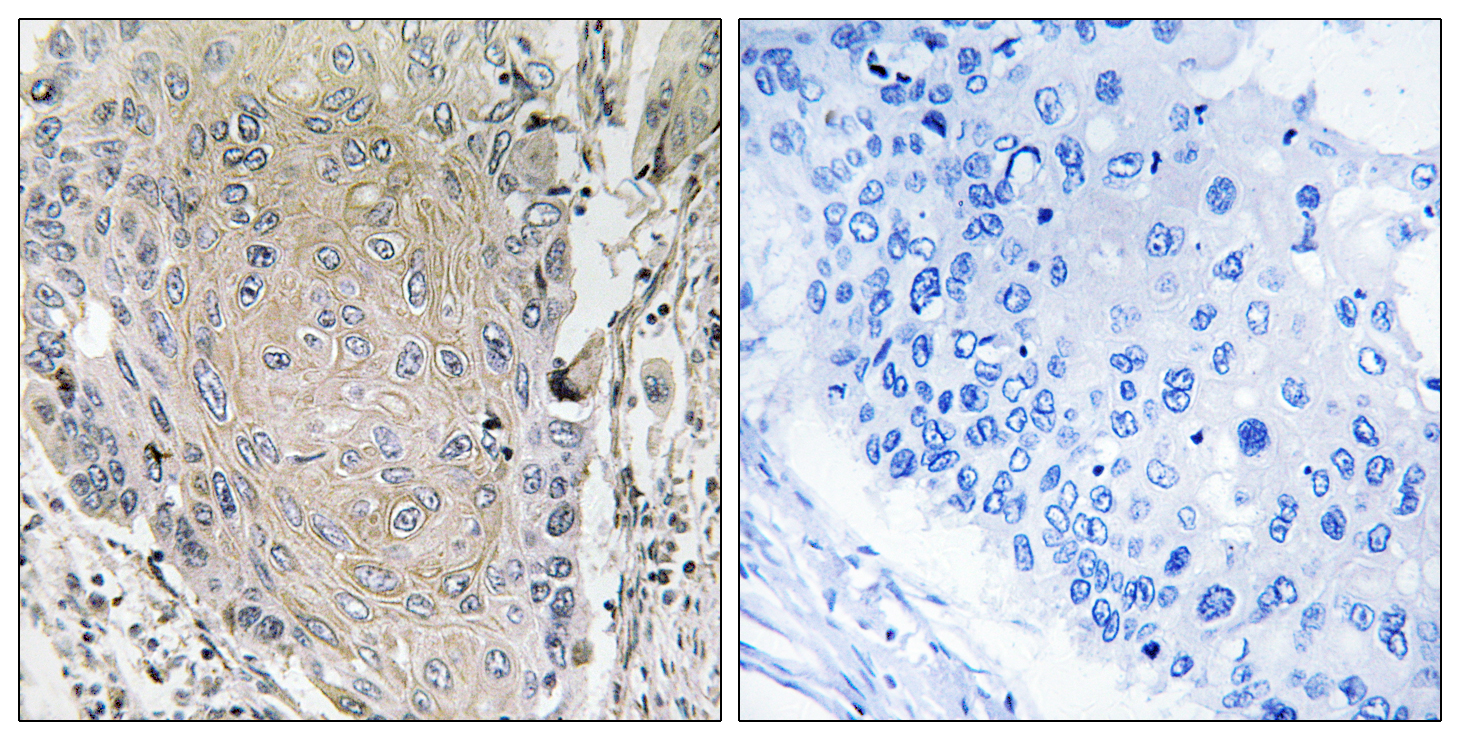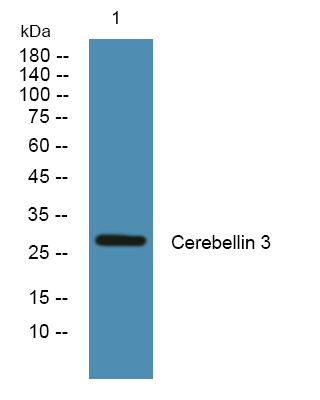Cerebellin 3 Polyclonal Antibody
- Catalog No.:YT0870
- Applications:IHC;IF;WB;ELISA
- Reactivity:Human;Mouse
- Target:
- Cerebellin 3
- Gene Name:
- CBLN3
- Protein Name:
- Cerebellin-3
- Human Gene Id:
- 643866
- Human Swiss Prot No:
- Q6UW01
- Mouse Gene Id:
- 56410
- Mouse Swiss Prot No:
- Q9JHG0
- Immunogen:
- The antiserum was produced against synthesized peptide derived from human CBLN3. AA range:131-180
- Specificity:
- Cerebellin 3 Polyclonal Antibody detects endogenous levels of Cerebellin 3 protein.
- Formulation:
- Liquid in PBS containing 50% glycerol, 0.5% BSA and 0.02% sodium azide.
- Source:
- Polyclonal, Rabbit,IgG
- Dilution:
- WB 1:500-2000 IHC 1:100 - 1:300. ELISA: 1:40000.. IF 1:50-200
- Purification:
- The antibody was affinity-purified from rabbit antiserum by affinity-chromatography using epitope-specific immunogen.
- Concentration:
- 1 mg/ml
- Storage Stability:
- -15°C to -25°C/1 year(Do not lower than -25°C)
- Other Name:
- CBLN3;Cerebellin-3
- Observed Band(KD):
- 27kD
- Background:
- Members of the precerebellin family, such as CBLN3, contain a cerebellin motif (see CBLN1; MIM 600432) and a C-terminal C1q signature domain (see MIM 120550) that mediates trimeric assembly of atypical collagen complexes. However, precerebellins do not contain a collagen motif, suggesting that they are not conventional components of the extracellular matrix (Pang et al., 2000 [PubMed 10964938]).[supplied by OMIM, Aug 2009],
- Function:
- function:May be involved in synaptic functions in the CNS.,similarity:Contains 1 C1q domain.,subcellular location:Secretion depends probably on a association with CBLN1 or perhaps CBLN4 but not on CBLN2.,subunit:Heterohexamer; disulfide-linked heterotrimers. Does not homooligomerize, but probably forms a complex with at least CBLN1. May interact with CBLN2 and CBLN4.,
- Subcellular Location:
- Endoplasmic reticulum . Golgi apparatus, cis-Golgi network . Secreted . Cell junction, synapse . In the absence of CBLN1, remains in the endoplasmic reticulum/cis-Golgi apparatus. Partial secretion depends on an association with CBLN1 and maybe CBLN4, but not on CBLN2 (By similarity). .
- June 19-2018
- WESTERN IMMUNOBLOTTING PROTOCOL
- June 19-2018
- IMMUNOHISTOCHEMISTRY-PARAFFIN PROTOCOL
- June 19-2018
- IMMUNOFLUORESCENCE PROTOCOL
- September 08-2020
- FLOW-CYTOMEYRT-PROTOCOL
- May 20-2022
- Cell-Based ELISA│解您多样本WB检测之困扰
- July 13-2018
- CELL-BASED-ELISA-PROTOCOL-FOR-ACETYL-PROTEIN
- July 13-2018
- CELL-BASED-ELISA-PROTOCOL-FOR-PHOSPHO-PROTEIN
- July 13-2018
- Antibody-FAQs
- Products Images

- Immunohistochemistry analysis of paraffin-embedded human lung carcinoma tissue, using CBLN3 Antibody. The picture on the right is blocked with the synthesized peptide.

- Western blot analysis of lysates from K562 cells, primary antibody was diluted at 1:1000, 4°over night



